Why Lake Nakuru National Park Should Be on Your Bucket List

Imagine chilling out in the heart of Africa surrounded by breathtaking landscapes, vibrant wildlife, and the captivating dance of pink flamingos on a shimmering lake. Say hello to Lake Nakuru National Park, a hidden gem nestled in the Great Rift Valley of Kenya.
This Unesco World Heritage Site is a unique blend of natural beauty and diverse wildlife. From open savannah grasslands and woodlands to thickets, dusty shorelines, rocky grounds and swamps, the park is an ideal destination for nature enthusiasts and adventurers.
In this post, we’ll journey through the wonders of Lake Nakuru Park, exploring its attractions, activities, and the conservation efforts in place to preserve this remarkable ecosystem.
Lake Nakuru National Park Video:
Book Your Safari to the Fascinating Lake Nakuru National Park With Us
To book your tour of Lake Nakuru National Park, we invite you to contact us via phone or WhatsApp at +254-704-532-105. You can also connect with us via email at safarioffers@kenyaluxurysafari.co.uk or safarioffers@ajkenyasafaris.com.
Our senior consultant, James Gatheru, will help you personalise your safari itinerary so you can enjoy the beauty the park has to offer.
Lake Nakuru National Park - Photos by Our Clients
Discovering Lake Nakuru National Park
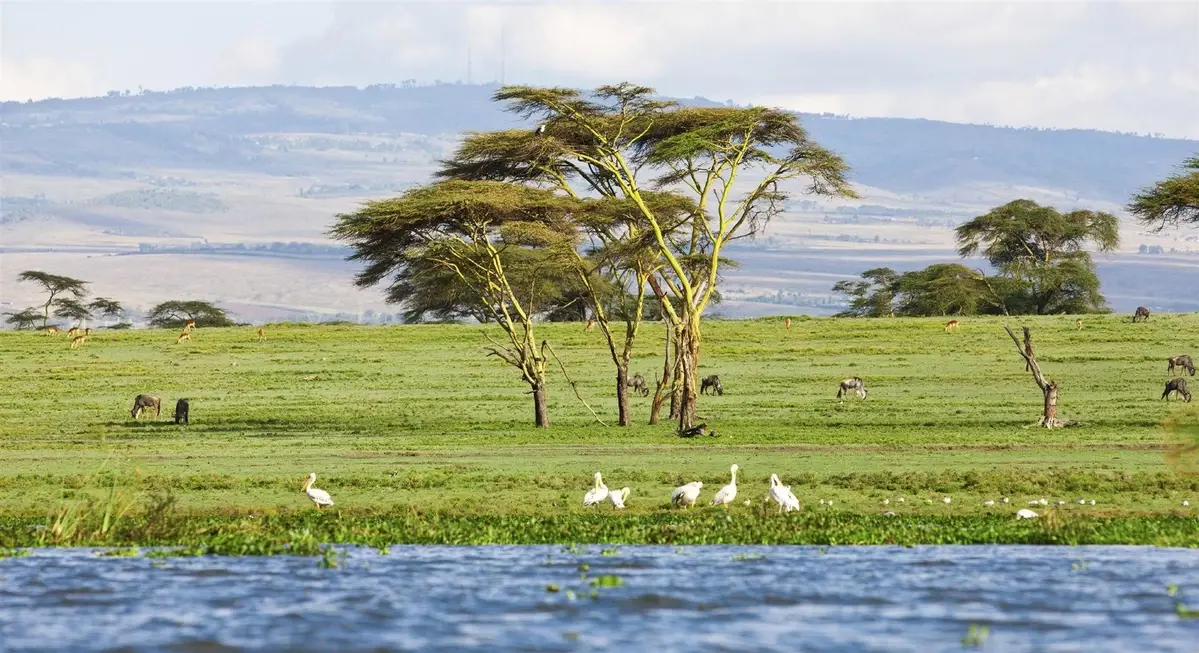
Established in 1961, Lake Nakuru National Park is a protected haven in Kenya’s Rift Valley. It’s located south of Nakuru town and shares a vicinity with attractions like Hells Gate National Park and Lake Naivasha. The park is smack in the middle of the Great Rift Valley—a 6,000-kilometre geological wonder extending from Lebanon to Mozambique.
The park’s primary attraction is its soda lake which is renowned for hosting the greatest bird spectacle the world over. Here, you’ll find an immense population of flamingos that paint the shores of the lake in vibrant hues of pink. In addition to the water birds, the park is home to a diverse array of wildlife, including the critically endangered black rhinos, Rothschild giraffes, and big cats. All of which roam freely in the park’s habitat.
The Shallow Soda Lake
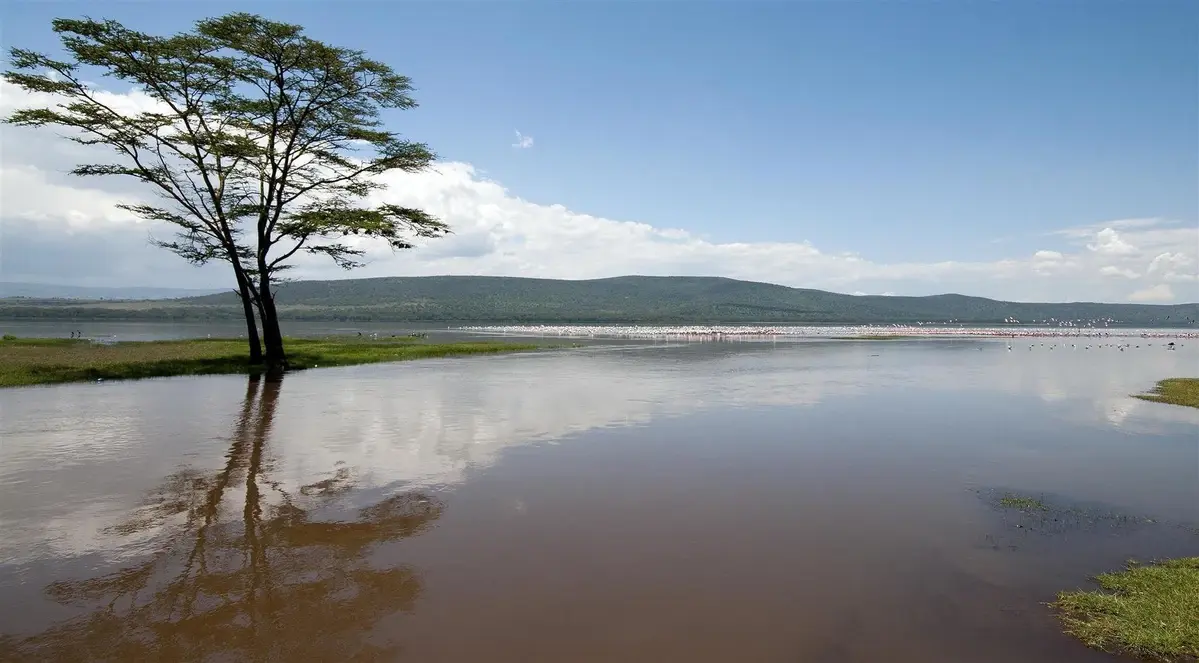
Lake Nakuru is a shallow alkaline lake, its surface area fluctuating between 5-45 km² based on rainfall. According to environmental researchers, the surface area of this shallow lake may increase up to 82 square kilometres by the year 2030 thanks to rising water levels.
The alkaline levels in the water body create the perfect environment for blue-green algae to thrive. Both lesser flamingos and greater flamingos (the former being the more abundant) can be observed along the lake’s shores. Alongside other bird species such as pelicans, the flamingo population feeds on this blue-green algae, shrimp and some water insects.
Birders will be delighted to know that Lake Nakuru is also home to other bird life. The park boasts more than 400 species of birds, including the African fish eagle, goliath heron, and numerous migratory birds. The captivating spectacle of countless birds taking flight over the lake is truly a sight to behold, showcasing the rich biodiversity and unique ecosystem existing within the park.
The Rhino Sanctuary

Rhinos along with elephants have always been targeted by poachers for their horns. The situation became so bad that rhinos particularly black rhinos were on the verge of extinction. To preserve these animals, the Kenyan government established the Lake Nakuru Rhino Sanctuary in 1987. Now both black and white rhinos have a safe habitat to thrive, away from illegal hunters.
The Spectacular Wildlife
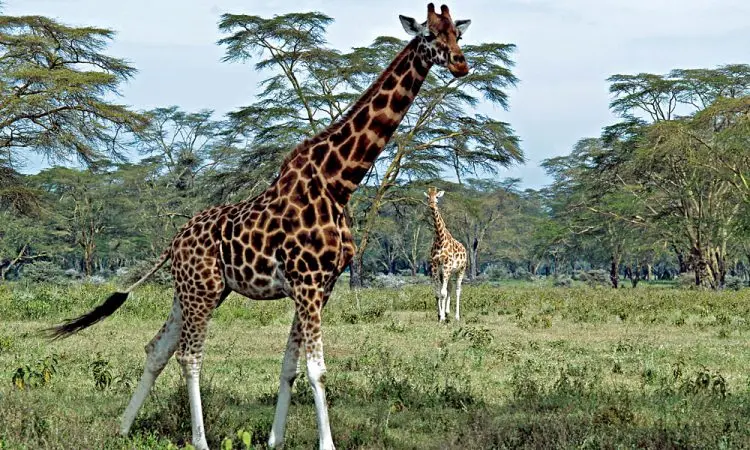
Offering unforgettable encounters with some of Africa’s most iconic species, Lake Nakuru Park boasts a remarkable variety of wildlife. The park has become synonymous with its impressive population of:
- black and white rhinos (over 25 eastern black rhinos on the premises, making it one of the biggest concentrations in the country)
- Endangered Rothschild’s giraffe
- Cape buffalo
- Big cats like lions and leopards
- Grazers like impala, gazelles, and waterbucks
- Large pythons
In addition to the park’s terrestrial inhabitants, Lake Nakuru’s shores are teeming with life. The lake’s flamingo population and other bird species create a mesmerizing display of colour. The abundance of wildlife in Lake Nakuru Park makes it a must-visit destination for anyone seeking an authentic and immersive African safari experience.
Exploring the Park: Must-See Attractions
Beyond its captivating wildlife, Lake Nakuru Park houses several awe-inspiring attractions that are a must-visit for every traveller. These include the Baboon Cliff viewpoint, the Makalia Waterfall, and the Out of Africa viewpoint. Let’s go into detail on what each attraction offers.
Baboon Cliff Viewpoint
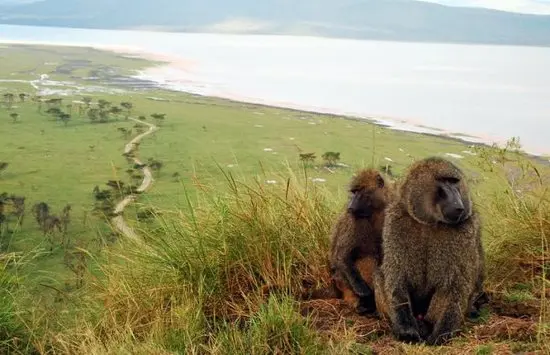
Baboon Cliff viewpoint, located within the park, offers breathtaking views of Lake Nakuru and its surrounding landscapes. The vistas from Baboon Cliff are particularly captivating in the early morning when the atmosphere is clear and the morning sunlight illuminates the expansive view.
The cliff has resting shades, sitting facilities, a car park, and washrooms and is an ideal spot for birding, game viewing and enjoying a picnic lunch. Guests should keep a careful eye on their food because resident baboons are notorious for swiping edibles from unwary picnickers.
Makalia Waterfall
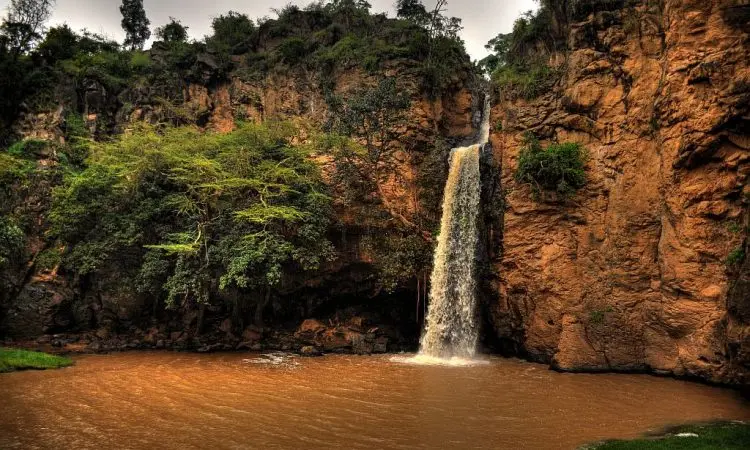
Located in the park’s southern region, the Makalia Waterfall, a charming seasonal cascade, adds to the scenic beauty. The falls are fed by Makalia River, a seasonal river that supports the park, alongside Njoro River and Enderit River.
The captivating beauty of the waterfall, surrounded by lush vegetation, and bird songs provides a tranquil setting for a picnic, brief lunch, birding and game viewing. The waterfall can be reached via a brief drive from the park’s main gate, making it an easily accessible attraction for visitors.
Out of Africa Viewpoint
Offering panoramic views of the park, the lake, and surrounding areas, the Out of Africa viewpoint, popularised by the 1985 film of the same name, is a sight to behold. This lofty and rocky promontory provides picturesque aerial vistas of the park, allowing visitors to appreciate the scale and beauty of this unique destination.
To reach the Out of Africa viewpoint, you’ll hike up a rocky path and cross some steep sections but it will be well worth your time. The scenic views of the lake and surrounding areas are simply stunning.
Activities and Experiences
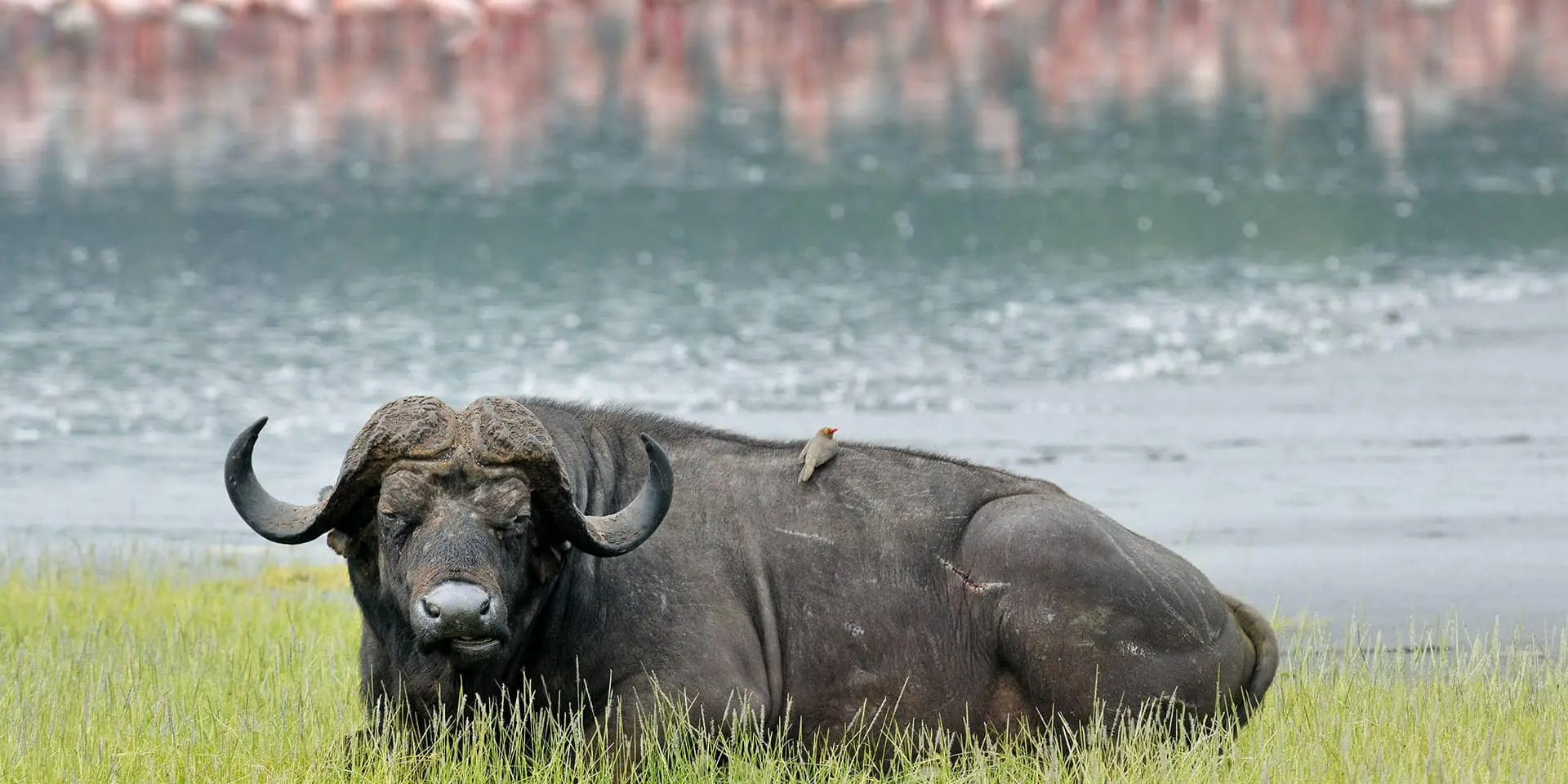
Beyond the park’s breathtaking attractions, Lake Nakuru National Park offers a range of exciting activities for visitors. These include:
- Game drive for close-up encounters with the park’s diverse wildlife
- Birding for enthusiasts keen on spotting the numerous avian species that inhabit the park
- Hiking or nature walks for those who wish to explore the park’s diverse habitats on foot
- Boat rides for those looking for a more leisurely exploration experience
Wildlife Viewing on Game Drives & Boat Rides
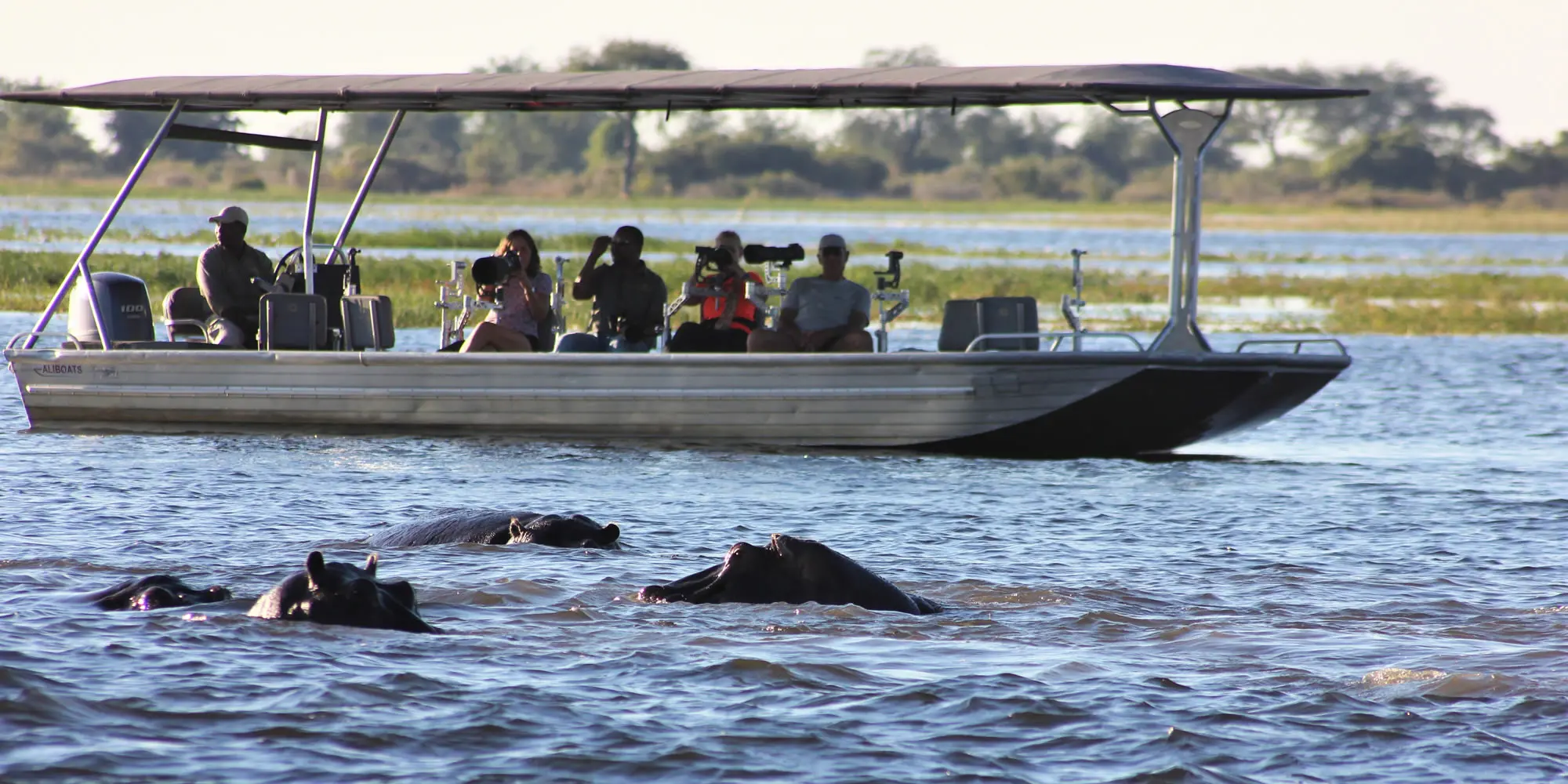
Game drives at the park are managed by the Kenya Wildlife Services. They provide opportunities to observe the park’s wildlife in their habitat—including the elusive ones. Leopard sightings, in particular, are rare but on a game drive with an experienced tour guide, you just might spot one.
On a game drive, you can spot rhinos by Lake Nakuru shores, zebras grazing, or buffalos looking out for their enemy. You can even see large slithery neighbour minding their own business. On a boat cruise, you can see large hippos peeking at you from under the water while you enjoy views of the alkaline lake and its surroundings. Both game drives and boat rides
Bird Watching

Birding is a popular activity in Lake Nakuru National Park, thanks to the park’s abundant bird life and the famous flamingo population inhabiting the lake. With over 400 species of birds, including the African fish eagle, goliath heron, and numerous migratory birds, the park is a paradise for bird-watching enthusiasts. Visitors can observe the various bird species in designated birding areas within the national park, taking in the mesmerizing sight of countless birds taking flight over the lake and its surroundings.
Hiking and Nature Walks
For those who prefer a more immersive experience, hiking and nature walks offer an excellent way to explore Lake Nakuru National Park’s varied ecosystem. Visitors can traverse the park’s trails, observing the wildlife in their natural environment and taking in the stunning landscapes that make the park a unique destination.
Accommodation Options
Whether you’re looking for luxury lodges or budget-friendly campsites, Lake Nakuru National Park offers a variety of accommodation options to suit all types of travellers.
Luxury Lodges and Camps
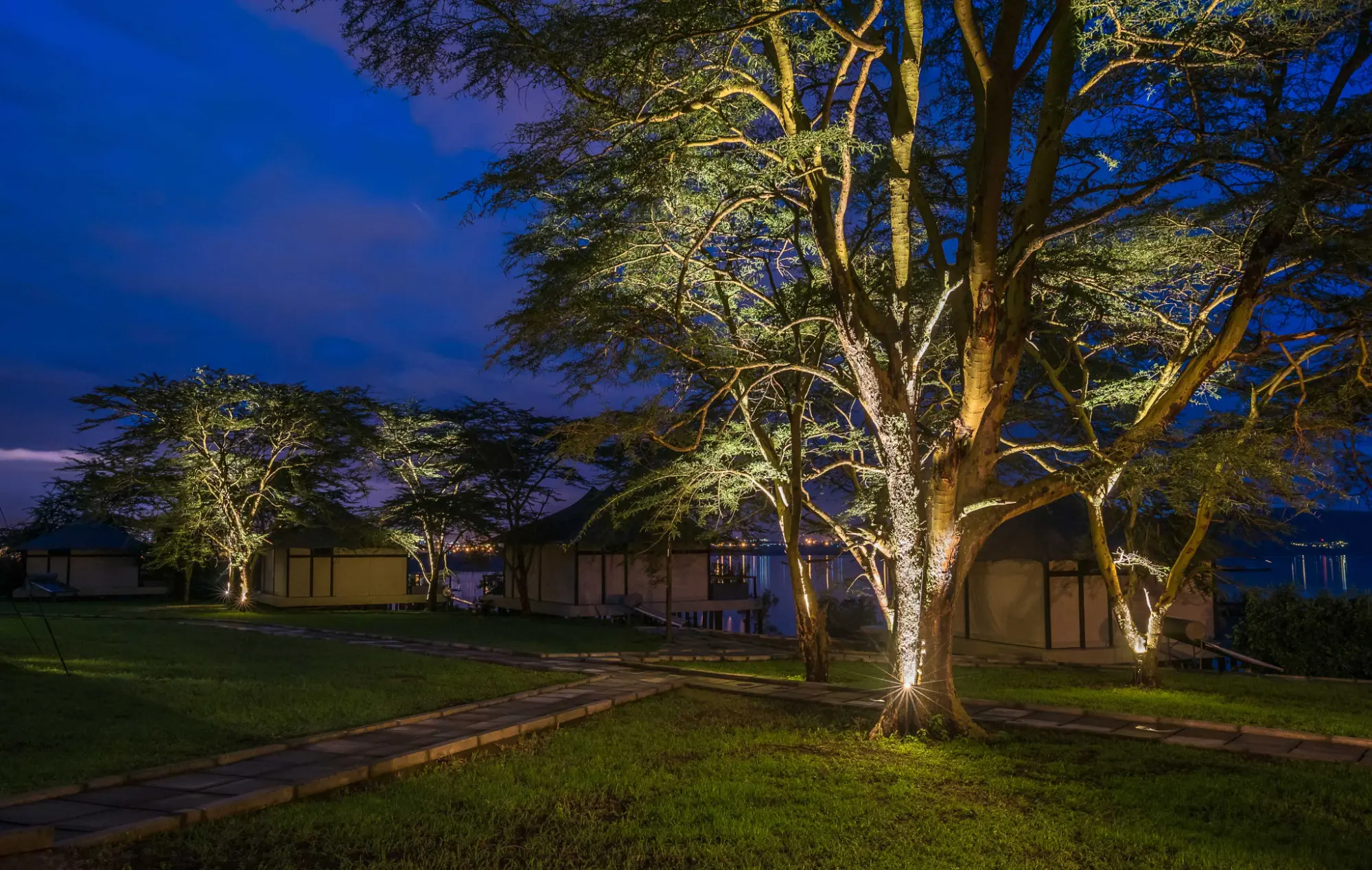
Whether you’re looking for luxury lodges or budget-friendly campsites, Lake Nakuru National Park offers a variety of accommodation options to suit all types of travellers. Luxury lodges and Camps at the park include the Lake Nakuru Sopa Lodge, The Cliff Luxury Camp, Mbweha Camp and Flamingo Hill Tented Camp. Midrange and budget options include Lake Nakuru Lodge, Lakira Camp and Rhino campsite.
How to Get There

Accessing Lake Nakuru National Park from Nairobi is both easy and convenient—you can come in via road or air.
The park is only 3.5 hours away, by driving along the Nairobi-Nakuru Highway. The journey takes visitors through the picturesque landscapes of the Great Rift Valley, and from the town centre of Nakuru, it is a further 4km to the park’s entrance gate.
The Lake Nakuru Park has three gates—the Main Gate, the Lanet Gate, and the Nderit Gate. The Main Gate is four hours from Nakuru Town and is the most popular with visitors. The Kenya Wildlife Services HQ is located at this gate and visitors can access information about the park at their offices.
The Lanet Gate is off the Nairobi Nakuru highway and is mostly used by visitors coming in from Nairobi. It cuts off the need to get into the town before heading for the Main Gate. Nderit Gate is the least known of all the gates and sees the least traffic. Visitors coming from the Maasai Mara and Lake Elementaita access Lake Nakuru via this gate.
If you’re flying into the park, you can take a domestic flight from Wilson Airport to Naishi Airstrip in Lake Nakuru National Park. The flight takes approximately 25 minutes.
Best Time to Visit
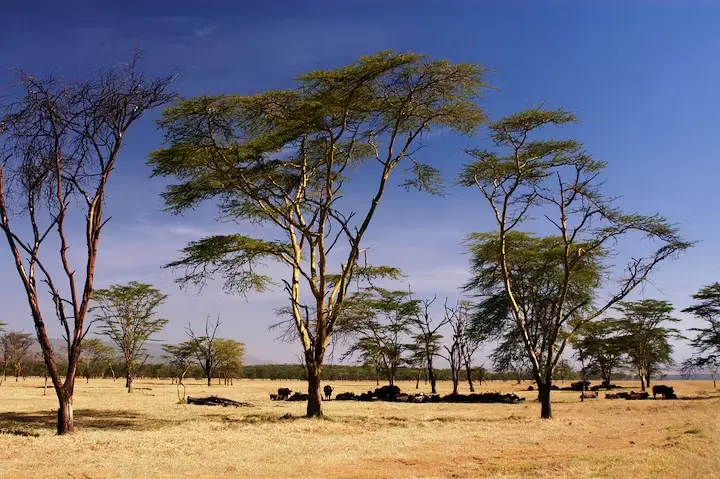
The dry season, spanning June to October and January to March, is the ideal time to visit Lake Nakuru National Park. During this period, wildlife sightings are more frequent, making it an ideal time to explore the park and appreciate its diverse flora and fauna. Visiting Lake Nakuru during the dry season is also favourable for hiking, or birding ensuring you make the most of your time at this stunning destination.
The wet season has lush vegetation, beautiful flowers, and clear skies. You can see newborn animals and many migratory bird species that flock to the park at this time. Perfect for birding and photography safaris. The wet season, also means that the rains can interfere with game drives and outdoor activities and the roads can be in a poor state.
Combining Lake Nakuru with Other Kenyan Destinations
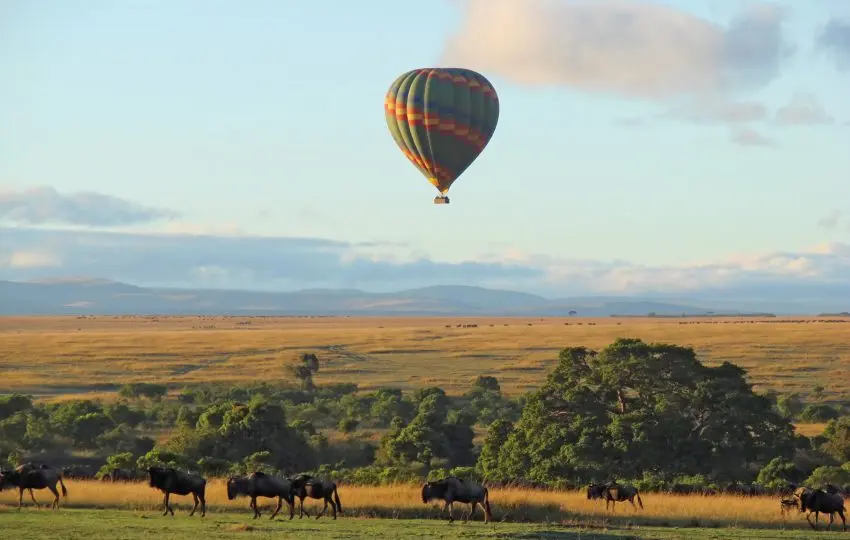
Nakuru town, and by extension Lake Nakuru National Park connects to other popular destinations in Kenya. If you want to keep your safari within Nakuru county, there are several worthwhile destinations you can tour.
Lake Elementaita is an hour’s drive from Nakuru town and just like Lake Nakuru, it’s a picturesque alkaline lake that attracts flamingos. Besides flamingos, Zebra, eland, and gazelles can be seen grazing near the lake’s shores. Lake Elementaita’s terrain comprises volcanic hills, grassy plains, acacia woodlands, craters, lava flows, and hot springs. Here, you can enjoy guided walks, horse riding, quad biking, birding, or exploring the Gambles Cave. Or you can visit the nearby wildlife-rich Soysambu Conservancy for game drives.
Lake Naivasha is a beautiful freshwater lake that’s ideal for boating safaris, birding, and relaxing. Boat trips are fun and you’re likely to spot hippos, pelicans, and herons. You can venture to Crescent Island for picnicking and wildlife viewing, go hiking at Mount Longonot, or bike at the Hell’s Gate National Park.
The world-famous Masai Mara is just under 4 hours from Nakuru town and you can personalise your safari itinerary to include both destinations. Your safari can start in Lake Nakuru National Park before heading to the Maasai Mara for the wildebeest migration and other thrilling wildlife viewing.
We can also tailor a safari encompassing tours to Lake Nakuru National Park with other national parks in Kenya. Top destinations include Ol Pejeta Conservancy, Samburu Game Reserve, Amboseli National Park, and Tsavo National Park. You can also opt for a bush and beach safari that will take you to Kenya’s wildlands for wildlife viewing before heading to our pristine coastline for some sun, sand, and fun.
Conservation Efforts and Community Involvement
Beyond being a haven for wildlife enthusiasts and nature lovers, Lake Nakuru National Park plays a crucial role in conservation efforts. The park hosts numerous conservation efforts and community involvement initiatives, such as annual events like Cycle with the Rhinos to safeguard the park’s wildlife and habitats.
Through the Lake Nakuru Conservation and Development Project (LNCDP), the park has adopted sound conservation practices for its wetlands, species protection, and wildlife management. By visiting Lake Nakuru National Park you’re contributing to the vital conservation efforts that facilitate the continued survival of animal species and their habitats.
Summary
Lake Nakuru National Park offers a truly captivating and unforgettable wildlife experience, showcasing the best of Africa’s natural beauty and diverse ecosystems. From the enchanting shores of the soda lake to vibrant flamingo populations, breathtaking viewpoints and stunning landscapes, Lake Nakuru provides an immersive African adventure.
Whether you’re a wildlife enthusiast, birder, hiker, or simply seeking to connect with nature, Lake Nakuru National Park promises to deliver wonderful experiences and lasting memories. Contact us to plan your safari at this remarkable destination.
Frequently Asked Questions
Why Is Lake Nakuru National Park Famous?
Lake Nakuru National Park is world-renowned for its awe-inspiring flocks of flamingos, and rare wildlife like the eastern black rhinos and southern white rhinos. The park has become a popular destination for birdwatchers and wildlife enthusiasts due to its incredible diversity of animals, bird species and vegetation. The park is also centrally placed meaning you can connect to other parks such as Nairobi National Park, Masai Mara, Aberdare National Park, and Ol Pejeta Conservancy.
Is Lake Nakuru National Park Worth Visiting?
Lake Nakuru National Park is definitely worth visiting, due to its impressive population of lions, leopards, and black and white rhinos. It also boasts beautiful landscapes and habitats thanks to its location in the Rift Valley escarpment. The park is also one of the most successful sanctuaries for rhinos in East Africa.
How Much Does It Cost To Get Into Lake Nakuru National Park?
The entrance fee to Lake Nakuru National Park is $60 per person during the high season of travel (July to February). In the low season, the fee is reduced to $40 for adults and $20 for children during the low season (March to June).
Are There Lions in Lake Nakuru National Park?
Yes, Lake Nakuru National Park is home to a healthy population of lions. They can be spotted resting on trees or roaming the park’s grasslands displaying their raw power and grace.
What Is the Main Attraction of Lake Nakuru National Park?
Lake Nakuru National Park is renowned for its tremendous population of flamingos, which can be seen dotting the edges of its shallow soda lake.
